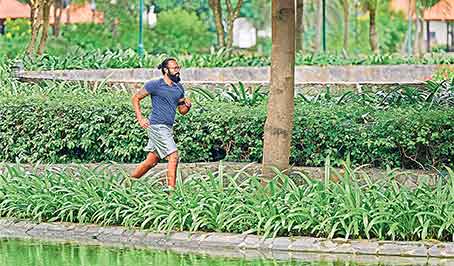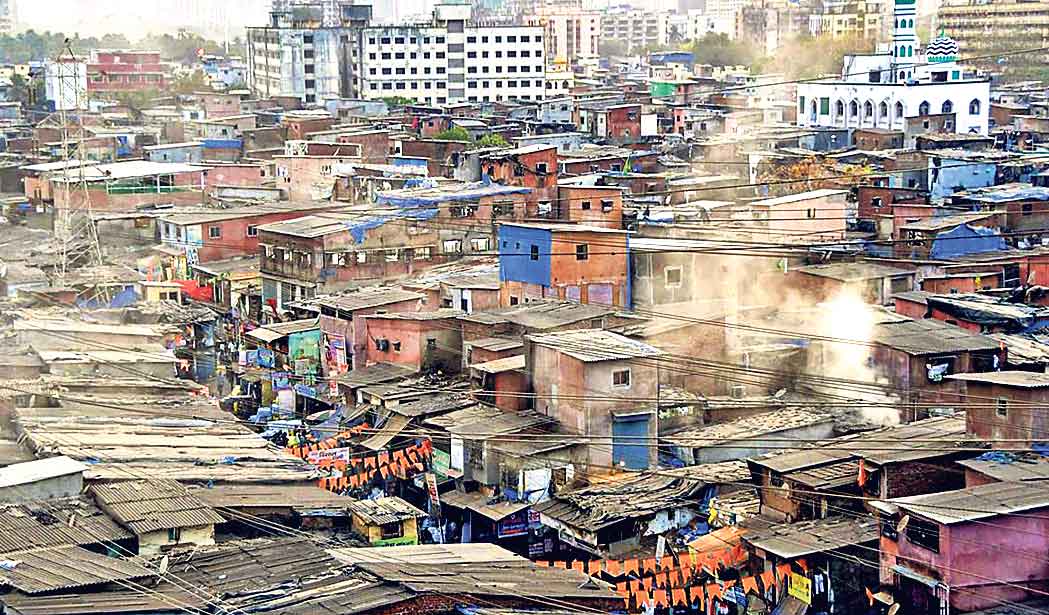Opinion: Rethink urban design — one green step forward
Green spaces aren't luxuries, they're essential and must be treated as life-saving investments rather than beautification projects

By Kannan K, Medha AS
With India’s rapid pace of urbanisation, it is projected that one in two Indians will live in cities by 2050. Effective urban planning has not kept pace with the rapid expansion of cities and the large-scale migration it brings. Most cities have failed to design policies that consider climate change-induced extreme weather events. As a result, the largest Indian cities face a series of challenges throughout the year.
In summer, cities report a high number of heatstroke casualties, with several residents suffering from blood pressure and cardiac issues. This situation is exacerbated by the Urban Heat Island (UHI) effect, wherein urban areas are much warmer than surrounding areas due to the longer heat retention of roads, concrete and dark-coloured materials that dominate city landscapes, delaying and preventing cooling even at nighttime.
Compounding the summer’s heat stress, the monsoon brings its own set of challenges. Widespread urban flooding with waterlogged roads is now an annual event. These conditions often cause accidents and lead to garbage pileups that block drains, resulting in disease outbreaks. Localised torrential rains or cloudbursts are also becoming increasingly common. These events overwhelm already inefficient drainage systems, causing flash floods that lead to loss of lives and severe infrastructural damage.
Air Pollution
During winter, the Air Quality Index (AQI) in many Indian cities escalates to hazardous levels, resulting in persistent smog that reduces visibility and contributes to increased vehicular accidents. According to the Air Quality Report 2024, 13 of the 20 most polluted cities globally are in India. Extremely high pollution level often forces the closure of educational institutions and government establishments, effectively bringing life to a standstill. Moreover, respiratory and cardiovascular diseases rise significantly among populations exposed to severe air pollution.
Another significant challenge for urban residents is the mental health burden stemming from demanding work schedules and the social isolation that often accompanies urban life. Data shows that city dwellers are more susceptible to depression, anxiety disorders, stress and feelings of social isolation.
The WHO recommends at least 9 square metres of urban green space per person, with 50 square metres considered ideal. Most Indian cities fall short of even the minimum, and none come close to the ideal
Indian cities also experience persistent noise pollution from traffic, construction, and congestion throughout the year, making life a struggle in many ways. While all these issues disproportionately affect the urban poor compared to the relatively affluent groups, the UN-Habitat’s World Cities Report 2024 projects that rising urban temperatures will affect all city inhabitants in the future. Cumulatively, the economic, social, and human costs borne by urban India are immense. No Indian city ranks in the top 100 of the World Quality of Living Index, with the highest rated city being Hyderabad at 150.
Urban Green Spaces
Urban Green Spaces (UGS) are areas within cities primarily covered by vegetation and accessible to the public either directly or indirectly, such as parks, gardens, street trees, riverbanks, open lawns, forests, and green roofs. The UN calls UGS “essential to the health, well-being, and resilience of urban populations”. UGS are vital providers of several ecosystem services. When effectively implemented, urban greening can help alleviate most of the issues plaguing our cities today.
Green spaces, even smaller ones, help solve microclimate issues by regulating temperature, improving air quality, providing shade, and easing the urban heat island effect. Studies show that UGS can reduce local temperatures by 1-3 degrees Celsius. During the monsoon, these same spaces act as natural sponges, absorbing rainwater and preventing soil erosion, thus reducing flood risk and protecting infrastructure from water damage. They also help recharge groundwater, an increasingly scarce resource in Indian cities.
In winter, when the air pollution levels soar, UGS act as natural air filters, capturing airborne pollutants and providing cleaner microenvironments. They also create sound barriers. Research confirms that access to UGS significantly boosts individual well-being. Parks and tree-lined streets promote walking and physical activity, leading to improved health outcomes and strengthening community life.
WHO Target
The World Health Organisation recommends a minimum target of 9 square metres, and an ideal value of 50 square metres, of UGS per capita. Most Indian cities fall short of this minimum target, and none come close to the ideal. Access to existing green spaces is often unequal, with poorer neighbourhoods having the least green cover, exacerbating health and social inequalities. New greening initiatives must prioritise under-resourced areas to reduce inequities and promote social justice.
Creating numerous small green spaces across cities may be more effective than establishing large parks, since this approach distributes benefits more evenly, avoids the challenge of finding sufficiently large land parcels, and helps prevent gentrification that often displaces low-income residents. Also, UGS need not be limited to public parks. They can be expanded to include existing spaces within government offices, educational institutions, and civic spaces. Many campuses and public institutions already function as UGS. Enhancing the ecological value of these spaces can significantly strengthen urban resilience while supporting the community’s well-being.
Initiatives such as Telangana’s Haritha Haram, which contributed to a 147 per cent increase in Hyderabad’s forest cover between 2011 and 2021, and the restoration of Delhi’s Sanjay Van demonstrate how concerted efforts can successfully rejuvenate urban landscapes.
The 12th Schedule of the Constitution assigns urban planning and development to urban local bodies. While they must take the lead in building green infrastructure, scaling these efforts requires financial and administrative support from the State and central governments. An integrated approach that embeds urban greening into city master plans and State climate action frameworks, under the guidance of the Ministry of Housing and Urban Affairs, is essential.
Cities are the future, and UGS are not a luxury — they are essential infrastructure crucial to environmental, social, and economic sustainability. As cities confront the compounded crises of heat, pollution, floods, and social isolation, UGS emerge as the closest thing to a living panacea. It is time they are treated as life-saving investments rather than beautification projects.

(The authors are doctoral researchers at the Centre for Economic and Social Studies [CESS], Hyderabad)
Related News
-
Telangana GP Polls: Losing candidates demand money back from voters in Kothagudem!
2 mins ago -
BRS alleges major scam in Telangana govt hostel beds tender
8 mins ago -
Unqualified doctors under scanner for ethical violations in Mancherial
34 mins ago -
Single higher education regulator Bill set for Parliament
37 mins ago -
Telangana Today, Namasthe Telangana host two-day auto show in Nalgonda
47 mins ago -
UDF sweeps Kerala local polls; BJP wrests State capital from Left
1 hour ago -
Nearly 500 villages to go to polls in Adilabad
1 hour ago -
Telangana, Andhra Pradesh head for legal showdown over Polavaram-Nallamala Sagar Link Project
1 hour ago




